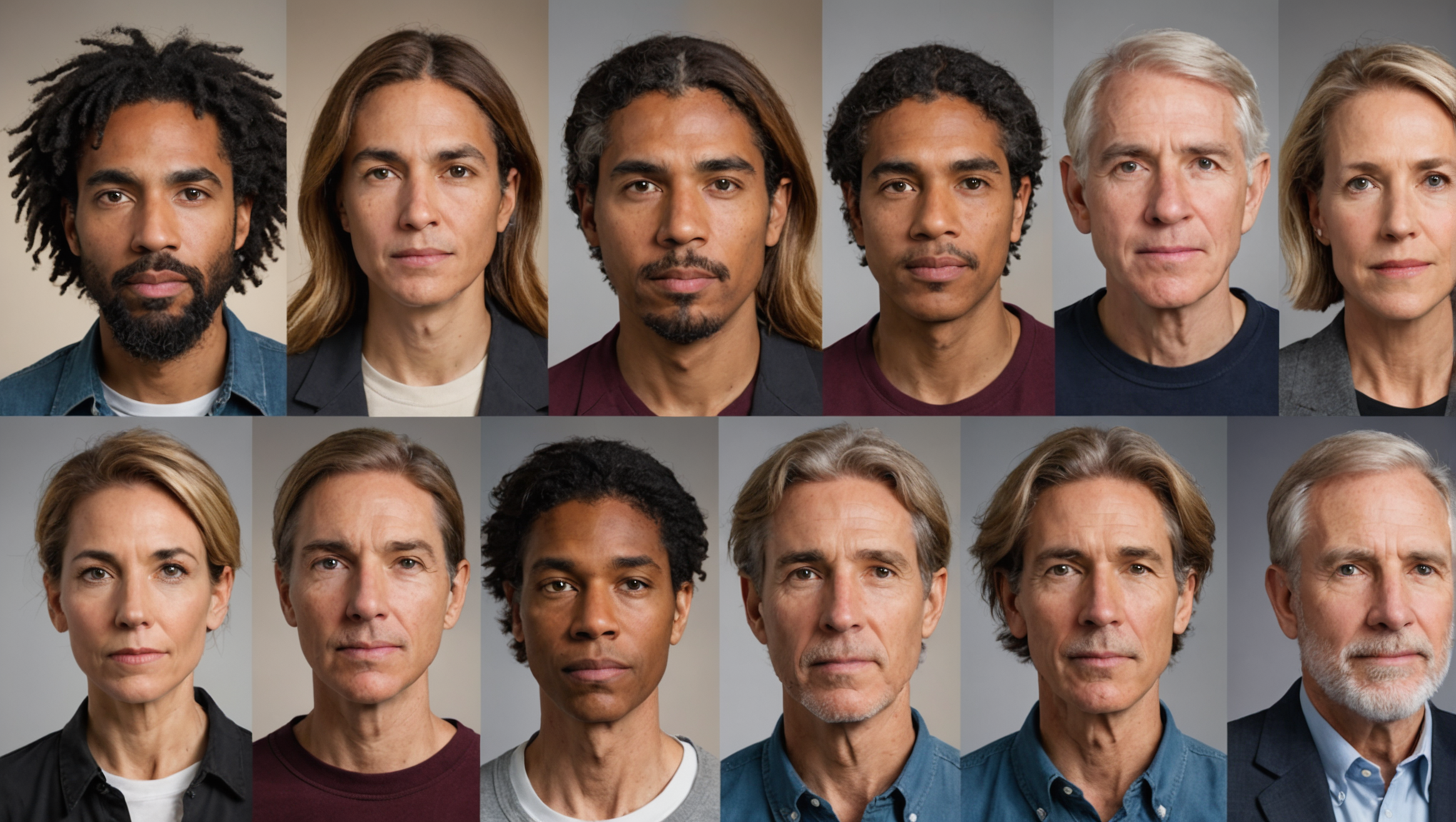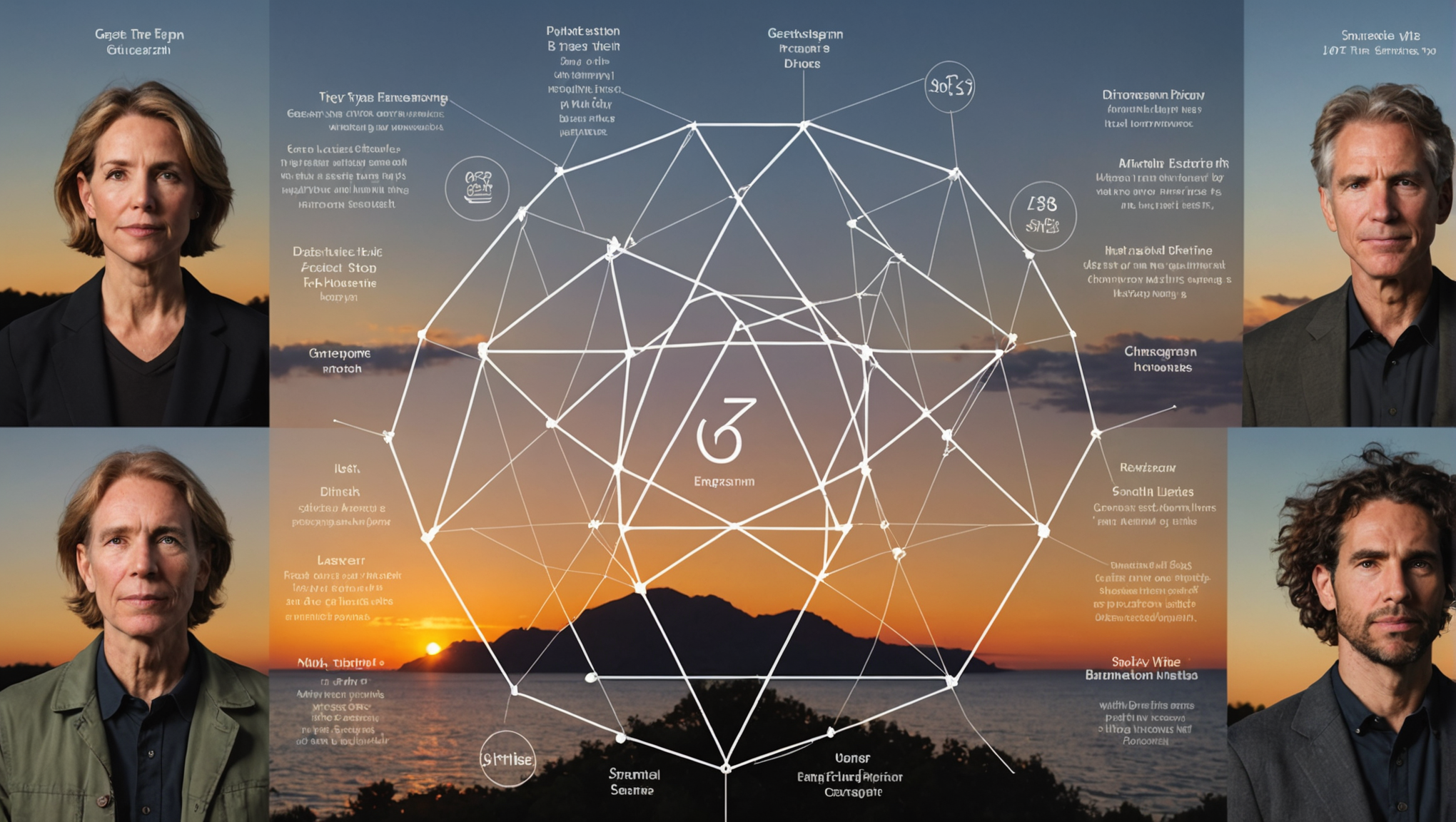Anxiety manifests differently in each of us. However, some feel this emotion as a heavy shadow, present at every corner of their daily lives. The Enneagram, with its diverse personality types, offers a fascinating perspective on how we experience and manage this anxiety. From the deep reflections of Type 6 to the incessant distractions of Type 7, each personality navigates its way through the universe of anguish. Have you ever wondered where you stand in this hierarchy of anxiety? Discover here how different Enneagram types perceive this universal emotion and develop unique ways to overcome it.

At the heart of our human experience, anxiety manifests differently according to our Enneagram type. Among these types, Enneagram 6 stands out for its high level of anxiety. Always preparing to face the unknown, it generates catastrophic scenarios in an effort to protect itself. This tendency towards constant worry makes it the champion of anxiety.
Type 4 follows closely, living its emotions intensely and sometimes overwhelmingly. Their constant search for meaning and sensitivity to the world’s imperfections leads them to a persistent anxiety as they seek to connect deeply with themselves and others.
In contrast, Type 9, despite its desire for peace, may find itself undermined by anxiety when trying to avoid conflicts. Its tendency to ignore problems can create latent tension that disrupts its tranquility.
At the other end of the spectrum, Type 7 presents a relaxed appearance but uses distractions to avoid anxious feelings. Preferring joy over apprehension, this type often flees delicate situations to avoid confronting its fears. Finally, Enneagram 2, in its quest for relational harmony, feels anxiety at the thought of being rejected, although it manages it by channeling its energy into helping others.

Anxiety and Enneagram: Which Profiles Are Most Impacted?
Among the enneagram types, Type 6, often referred to as the loyalist, stands out with its intense relationship with anxiety. This profile is in constant alert, anticipating the worst to ensure readiness for the unexpected. This concern for the future and uncertainty can sometimes turn into obsession, driving them to retreat into a multitude of backup plans. However, their constant vigilance can also make them major assets in risk management and planning. According to a recent study, this type would be the one experiencing the most anxiety among the nine Enneagram types. Discovering how they perceive reality can help better understand their inner world.
The Emotional Complexity of Type 4
Enneagram Type 4s often live in a universe of emotions with an intensity that makes their daily lives complex and sometimes distressing. Their search for meaning and deep connection can lead them to experience particularly acute anxiety when they feel misunderstood or disconnected. However, their capacity to feel deeply also makes them susceptible to create with remarkable authenticity, be it in art or relationships. By seeking ways to express themselves constructively, such as through music or writing, they can transform their anxiety into creative power.
Discovering strategies to help Fours overcome their anxiety can be essential. These individuals can create works that deeply touch others while learning to navigate their own feelings. Their quest for meaning can be accompanied by practices such as meditation to find a balance between inner reflection and daily life. Nevertheless, it is crucial for them to navigate this emotional sea with compassion towards themselves, recognizing the beauty in their imperfections and avoiding getting completely lost in them.
Relaxing as a Type 9
Type 9, often labeled as the peacemaker, aspires to a harmonious balance in its environments. The irony is that this need for peace can also become a source of anxiety when stress accumulates. Rather than confronting a stressful situation directly, Nines may tend to postpone facing problems to preserve their momentary comfort, which can ultimately intensify their anxiety. For these individuals, recognizing the importance of being a little uncomfortable to resolve conflicts is essential for overcoming emotional turbulence.
Mindfulness practices can be particularly helpful for anchoring Nines in the present and cultivating the tranquility they seek. Adopting regular relaxation routines, like yoga or meditative walking, can help release accumulated stress and establish a lasting sense of peace. Furthermore, breaking away from procrastination through gradual actions against their fears allows these individuals to regain the inner peace they long for.

FAQ
Q: What is the most anxious Enneagram type according to the article?
A: According to the article, Enneagram type 6 is the most anxious, with 100% of respondents claiming to often feel anxiety.
Q: Which types follow in terms of anxiety after type 6?
A: The types that follow type 6 in terms of anxiety are types 4, 9, and 5, in descending order of anxiety.
Q: How can Enneagram type 6 cope with their anxiety?
A: Type 6 individuals can cope with their anxiety by focusing on current events, limiting information overload, and relying on a reliable support network.
Q: Which Enneagram types are the least anxious?
A: According to the article, types 3, 8, and 2 are among the least anxious.
Q: What advice is recommended for type 4 to manage anxiety?
A: Type 4 individuals can manage anxiety by setting boundaries with their emotions, challenging negative thoughts, and expressing themselves creatively.
Q: Does the article suggest that anxiety is determined solely by Enneagram type?
A: No, the article clarifies that anxiety is not solely determined by Enneagram type. Each individual has unique capabilities and life experiences that influence their experience of anxiety.
Q: How can type 1 lower its level of anxiety?
A: Type 1 can reduce its anxiety by letting go of perfectionism in small areas, practicing self-compassion, and creating a relaxation routine.
Q: What advice is given to type 5 to tame their anxiety?
A: Type 5 individuals can tame their anxiety by engaging in physical activities, testing their knowledge in the real world, and balancing their alone time with social activities.











